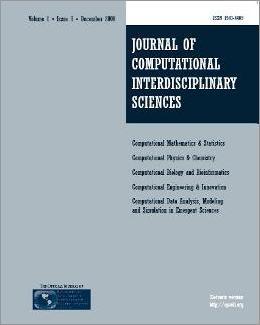
Editorial Office:
Management:
R. S. Oyarzabal
Technical Support:
D. H. Diaz
M. A. Gomez
W. Abrahão
G. Oliveira
Publisher by Knobook Pub


Editorial Office:
Management:
R. S. Oyarzabal
Technical Support:
D. H. Diaz
M. A. Gomez
W. Abrahão
G. Oliveira
Publisher by Knobook Pub
doi: 10.6062/jcis.2010.01.03.0025(Free PDF)
Thalita Biazzuz Veronese and Mauricio Pozzobon Martins
In contrast to the perceptual capability of artificial systems, the biological perception of spatial patterns is a continuous cognitive process. In particular, the visual system of primates has a space-variant nature where the resolution is high on the fovea and decreases continuously to the periphery of the visual field. Moreover, the pattern perception and recognition may change, also continuously, when orientation and depth changes. An interesting aspect is that the perceptual performance needs to increase when the structure in recognition gets more complex in terms of irregular spatial contents (asymmetries). Based on these properties, we introduce a computational measurement procedure where the asymmetries are "continuously" quantified using intersections among partially fuzzy images. The asymmetries are quantified using the first gradient moment from the Gradient Pattern Analysis methodology. In this application, the first gradient moment is a fuzzy parameter whose fuzzy deviation is set in the same level of biological perceptual uncertainty. The performance of our approach is tested over texture variation perception in SAR (Synthetic Aperture Radar) images and the results show that this measure can be useful for real-time machine navigation and, in a more general sense, for biologically motivated morphology research.
Computer vision, fuzzy logic, complex structures perception.
[1] JAIN R, KASTURI R & SCHUNCK BG. 1995. Machine Vision, McGraw-Hill, Inc., New York.
[2] WANDELL BA. 1995. Foundations of Vision, Sinauer Associates, Inc., Massachusetts.
[3] ROSA RR, SHARMA AS & VALDIVIA JA. 1999. Int. J. Mod. Phys. C, 10: 147-163.
[4] ASSIREU AT, ROSA RR, VIJAYKUMAR NL, LORENZETTI JA, REMPEL EL, RAMOS FM, ABREU SA SL, BOLZAN MJA & ZANANDREA A. Ž 2002. Physica D, 168(1): 397-403.
[5] ROSA RR, KARLICKY M, VERONESE TB, VIJAYKUMAR NL, SAWANT Ž HS, BORGAZZI AI, DANTAS MS, BARBOSA EBM, SYCH RA & MENDES O. 2008. Gradient pattern analysis of short solar radio bursts, Advances in Space Research, 42: 844-851.
[6] RAO VB & RAO HV. 1993. C++ Neural Networks and Fuzzy Logic, Mit Press, New York.
[7] SOILLE P. 1999. Morphological Image Analysis, Springer, Berlin.
[8] TRUCCO E & VERRI A. 1998. Introductory Techniques for 3-D Computer Vision, Prentice Hall, New Jersey.
[9] ASSIREU AT et al. 2004. Aplicacžao do Operador de Fragmentacž ao Assimetrica (FA) na caracterizacž Ž ao de controles geomorfol ogicos em Ž reservatorios hidroel Ž etricos, Revista Brasileira de Geoci Ž encias, 34(4): 501-508.
[10] TSAI VJD. 1993. Delaunay triangulations in TIN creations: an overview and a linear-time algorithm. Int. J. Geogr. Inf. Syst. 7: 501-524.
[11] GRADIENT PATTERN ANALYSIS, Wikipedia. http://en.wikipedia.org/wiki/Gradient pattern analysis.